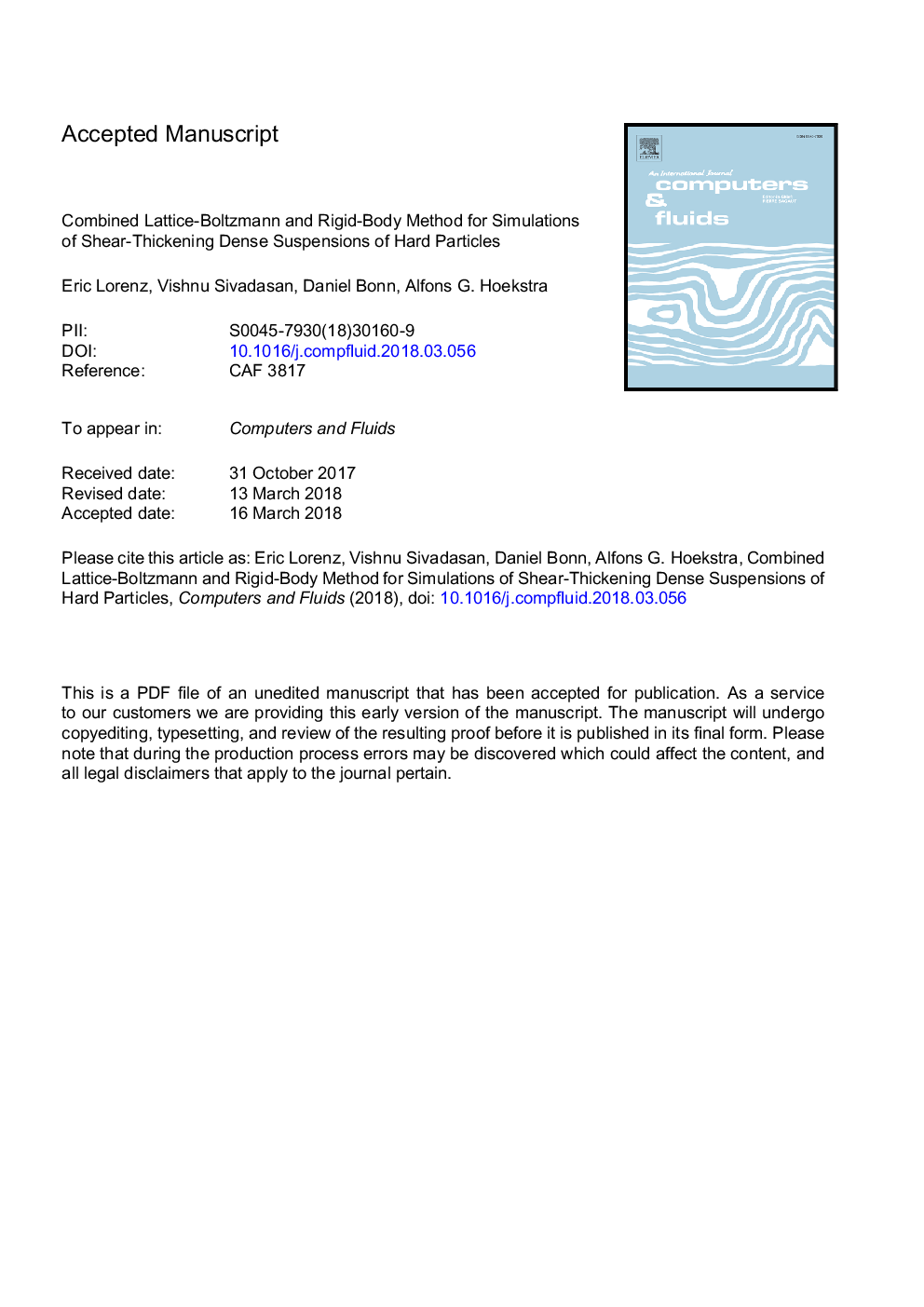| Article ID | Journal | Published Year | Pages | File Type |
|---|---|---|---|---|
| 7155851 | Computers & Fluids | 2018 | 16 Pages |
Abstract
We present a high-fidelity simulation model for dense suspensions of spherical and non-spherical particles suspended in a Lattice-Boltzmann Method (LBM) based fluid. The non-spherical particles are composed of an arbitrary number of overlapping spheres of different sizes and arbitrary relative positions in the particle reference frame which stay fixed during the simulation. This approach allows to approximate a wide range of rigid particle shapes. Fluid Structure Interactions (FSI) are realized using a hybrid of immersed-boundary methods and bounce-back schemes, that employs coupling coefficients dependent upon particle overlap with the fluid lattice, resulting in smooth hydrodynamic interactions when particles move over the lattice. Numerical lubrication breakdown is overcome by applying appropriate corrections for small inter-particle gaps and hydrodynamic interactions are resolved down to scales much smaller than the LBM lattice spacing. For improved numerical stability in the limit of stiff particle-particle interactions, a generalized-α method together with a dynamically refined time-step is used for rigid body dynamics. An unbounded shear flow with large shear rates is realized by splitting the computational domain into multiple co-moving reference frames coupled through Galilean transformations of both fluid and particle phase. For fast simulations of hundreds of particles over physical times-spans of seconds, the LBM sub-model and FSI computations are accelerated on GPUs and MPI/OpenMP are used to parallelize the computation over networked/shared-memory resources. All these innovations together lead to a very powerful simulation environment for sheared dense suspensions, facilitating study of rheology close to the jamming limit. In this paper we present benchmark results and simulations of continuous and discontinuous shear-thickening of dense polydisperse frictional suspensions, demonstrating the accuracy and predictive power of the model over a large range of volume fractions of suspended particles and a large range of shear rates.
Keywords
Related Topics
Physical Sciences and Engineering
Engineering
Computational Mechanics
Authors
Eric Lorenz, Vishnu Sivadasan, Daniel Bonn, Alfons G. Hoekstra,
